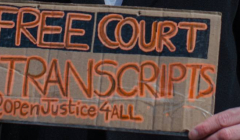
Why Open Justice For All is seeking change for victims
Campaigner Charlotte Schreurs explains why the creative industry is coming together to lobby for change for victims.

Daren Poole, Global Head of Creative, Insights Division at Kantar explores what truly makes a brand creatively effective.

The world had never been quite so challenged in terms of creative effectiveness when the coronavirus pandemic hit. Almost immediately, marketers started to slash their media. While they were aware that maintaining an advertised presence was important, many also felt that any remaining spend needed to acknowledge and respond to the crisis. And, although many countries have started to relax their lockdowns, most advertisers say that it will be months before they return to business as usual. When they do, how can they ensure that their advertising delivers maximum returns?
The declaration of coronavirus as a pandemic coincided with the launch of Kantar’s inaugural Creative Effectiveness Awards. In 2019 we had tested our 200,000th ad for a client and for the first time, had planned to showcase the most creative and effective content of the year from digital, print and out of home, and TV.
At a time when corporate short-termism and demand for immediate returns was being blamed for poor ROI, we set out to identify the work that would pay for itself short term but also represent a good long-term investment through building longer term equity. Post-COVID, we can expect to see plenty of ‘performance marketing’, but the wise marketer will be planning for the future.
Ads with purpose and that are seen to be a good fit with the brand are the ones that deliver good long-term outcomes.
Daren Poole
The first challenge that any brand faces with advertising is to circumvent our brain’s tendency to screen out any stimulus that isn’t biologically important or personally relevant. One of the features of the winners in the awards is that they have a high degree of distinctiveness: by doing something different from the rest of the category the ads were able to capture attention and jolt us into taking notice.
Distinctiveness can be about telling a story in a way that it’s never been told before, ideally with a strong role for the brand. Alternatively, it can be about continuing the telling of a story based on an ongoing creative platform, benefitting from the consistent use of an advertising idea that utilises distinctive brand assets or brand cues. Nesquik’s ‘Roommate’ in the digital category is a great example of how an unusual approach can be used to get attention.
We’ve seen the rise of purpose in advertising for a few years now. While some people are now questioning its value, Kantar’s Brandz data shows that brands with purpose do grow faster than others. There’s a healthy representation in our winners, whether that be highlighting the actions being taken to help people without addresses get bank accounts (HSBC UK), getting people to take the stairs instead of escalators (Dulux) or making washing machine parts with recycled plastic (Grundig).
One of the reasons that purpose in advertising is sometimes criticised is because it is perceived to be done for commercial gain: it’s not genuine or authentic. Our database shows that simply demonstrating good doesn’t make the difference between a strong and a weak performance: ads with purpose and that are seen to be a good fit with the brand are the ones that deliver good long-term outcomes.
In line with the rise in brand purpose, we’ve seen a corresponding decrease in the number of ads that feature humour. Too often, being considered a good corporate citizen is seen as needing to be austere. It’s been said that it’s easier to make people cry than to make them laugh. But if you can achieve a laugh that can help get past the brain’s ad filtering system and position the brand as emotionally different, it can in itself deliver purpose. In our awards, gentle humour is used by BP to sell fuel in a distinctive way and by Amstel to deliver a new product message via digital in just 15 seconds.
Sometimes, in the absence of distinctive advertising, brands resort to product innovation to drive engagement. It’s true that there are a number of new products and line extensions in our awards, but what’s interesting is that the launches don’t simply seek to be effective in the short term via an explicit show and tell; rather they weave the product news into a more implicit story. This commitment to creativity not only gets noticed by viewers, but it’s remembered and so contributes to longer term equity. Unox uses animation to tell the story of a little girl who switches her butcher father’s traditional meat sausage for a vegetarian sausage, in a way that is engaging and responsive to changing consumer trends.
These broad trends in the winners reflect that there is no exact recipe for creative effectiveness. Understanding the short-cuts for being noticed and remembered into the long-term will definitely help but starting with a clear idea of what you want your advertising to achieve and a deep understanding of your consumer is key to success.
You can see the ads that won the awards and read more winner insights on our website.
Daren Poole is the Global Head of Creative, Insights Division at Kantar. He leads Kantar’s creative development offer, ensuring that solutions and expertise evolve to meet changing client needs. With a background in brand and communications research, Daren has worked in Europe, Asia, North America and Australasia.
Looks like you need to create a Creativebrief account to perform this action.
Create account Sign inLooks like you need to create a Creativebrief account to perform this action.
Create account Sign in